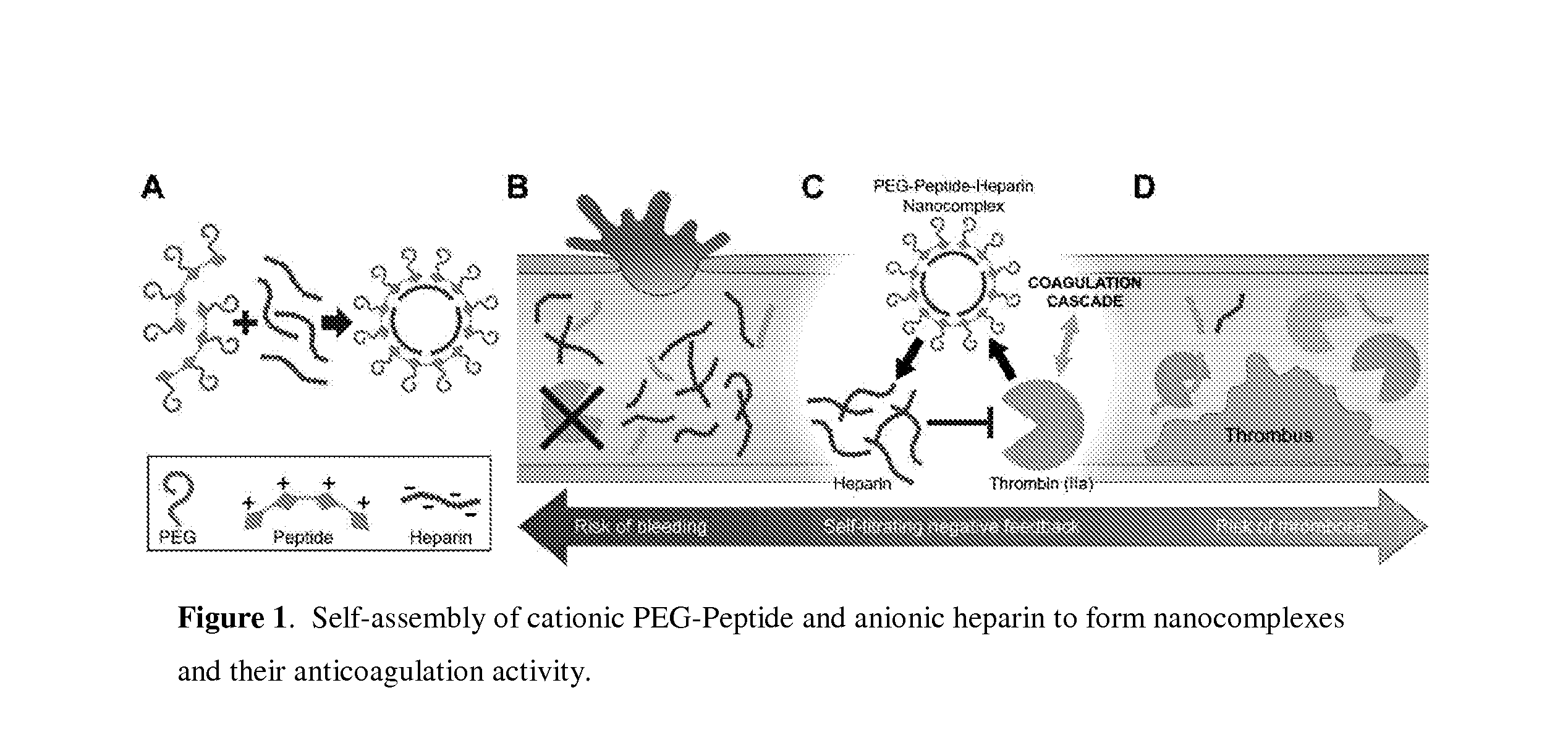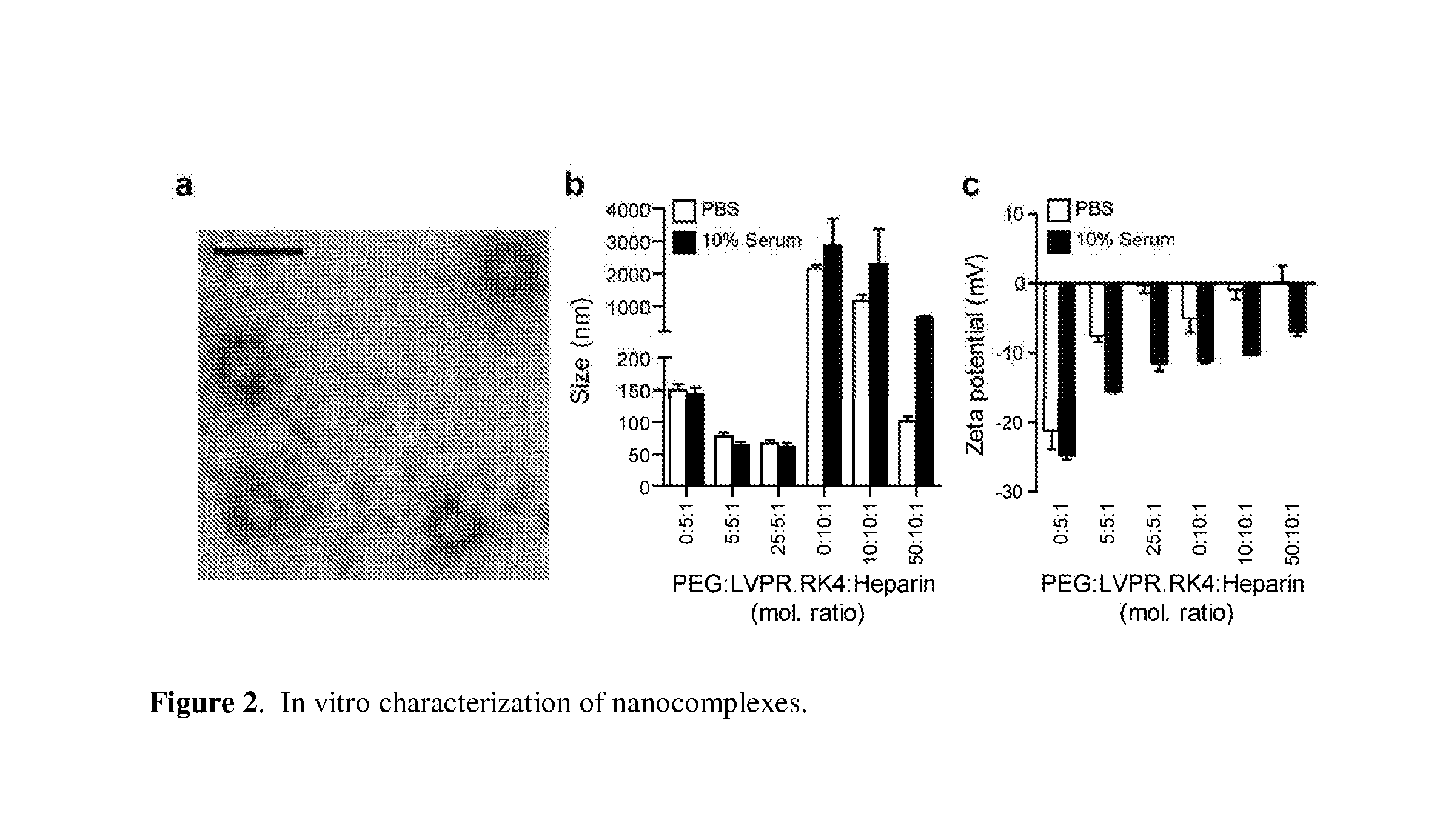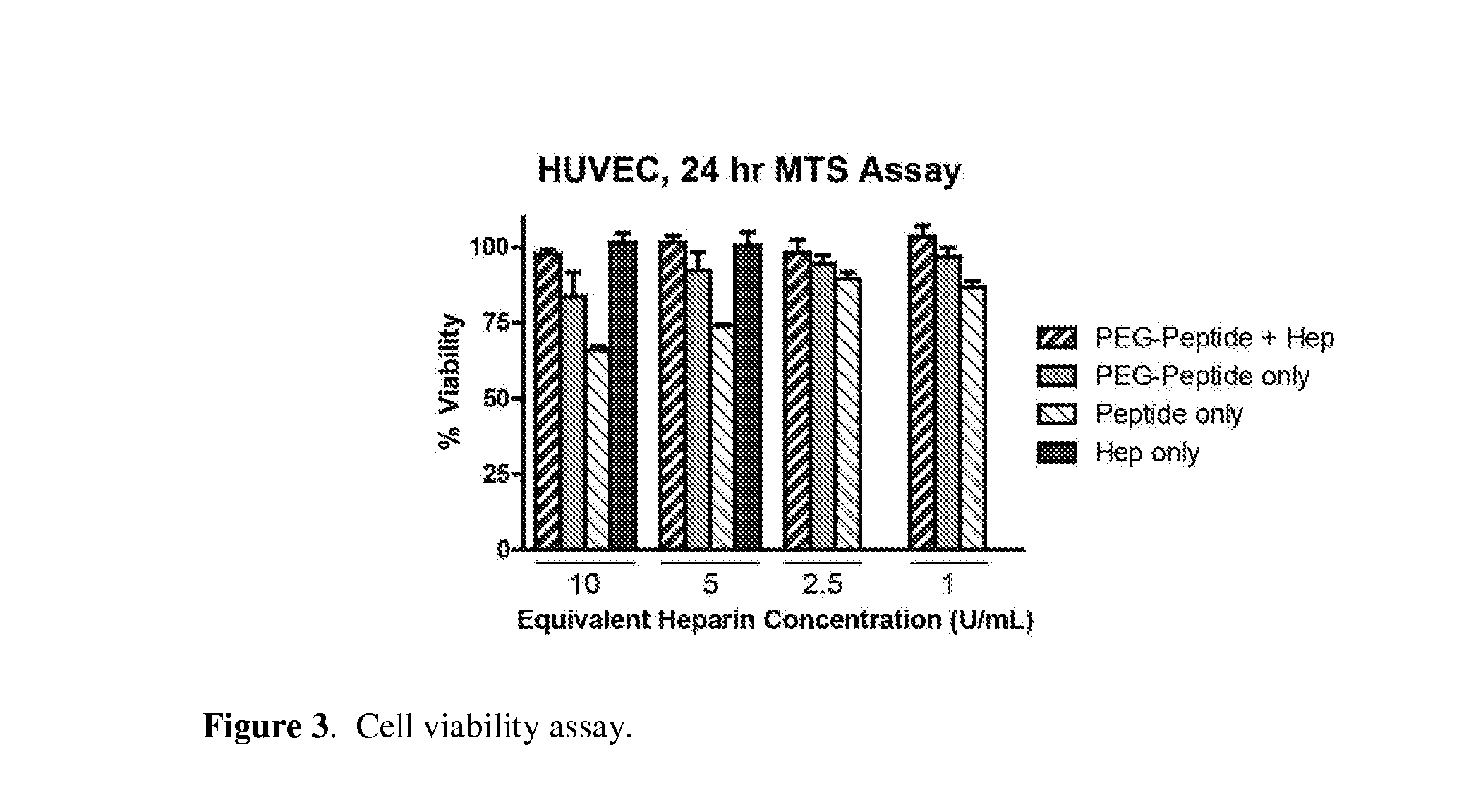Stimulus responsive nanocomplexes and methods of use thereof
a technology of nanocomplexes and stimuli, which is applied in the direction of drug compositions, peptide/protein ingredients, extracellular fluid disorders, etc., can solve the problem that the masking moiety is no longer able to prevent the therapeutic agent from exerting its biological activity
- Summary
- Abstract
- Description
- Claims
- Application Information
AI Technical Summary
Benefits of technology
Problems solved by technology
Method used
Image
Examples
example 1
Synthesis of Charged Peptides
[0122]Heparin is a strongly anionic material which may be neutralized in the clinical setting via sequestration by cationic, arginine-rich protamine peptides that bind heparin to form non-reactive nanocomplexes (Rossmann P. et al., Virchows Archiv B Cell Pathol., 1982, 40:81-98). Synthetic peptide antidotes of heparin require a minimum amount of positive charge in order to completely neutralize the functional activity of heparin (DeLucia A. et al., J. of Vascular Surgery, 1993, 18:49-58). Accordingly, a long peptide with multiple cationic regions separated by protease-cleavable sequences was designed. It was expected that this peptide would veil heparin function while intact, but will break down into fragments that would be too small to inhibit heparin activity in response to thrombin-induced cleavage. Sequence of the peptide contained LVPRG, a well-known thrombin substrate separated by stretches of alternating positively-charged amino acids, arginine an...
example 2
Synthesis and Characterization of Heparin-Peptide Nanocomplexes
[0124]The PEG-conjugated peptides as described in Example 1 were combined with heparin (sodium salt from porcine mucosa, Sigma) at a fixed concentration of 20 U / mL (−0.1 mg / mL) unless reported otherwise. To determine the optimal ratio of PEG:peptide:heparin, nanocomplexes with peptide:heparin ratios between 1:1 to 10:1 and PEG:peptide ratios between 1:1 to 25:1 were formed, incubated in PBS buffer or 10% serum for 1 hour, and their size and zeta potential was measured by dynamic light scattering. For measurements in ionic solutions, 10×PBS stock was added to pre-formed nanocomplex solutions for a final concentration of 1×PBS. For measurements in serum, bovine serum (Gibco) was added to a concentration of 10% (v / v). Mean hydrodynamic diameter was determined via dynamic light scattering of a 50 μL sample at 20 U / mL heparin (ZetaSizer Nano Series, Malvern) and is shown in FIG. 2B. Zeta potential was measured via electrophor...
example 3
Cytotoxicity Assays
[0126]Since cationic peptides may be cytotoxic (Ellerby et al., Nat Med (1999), 5: 1032-1038; Hancock, R. E. W., Lancet (1997), 349(9049):418-422; Wyman et al., Biochemistry (1997), 36(10):3008-3017), the cytotoxicity of nanoparticles at 25:5:1 PEG:peptide:heparin ratio (25:5:1 LVPR.RK4 particles) was determined. For the cytotoxicity assays, Human umbilical vein endothelial cells (HUVEC, Passage 9) were cultured in EGM-2 media (Lonza) on a 96-well plate. When the cells reached 70% confluency, nanocomplexes, free peptide, or free heparin were added as 9×stocks in PBS, diluted in EGM-2. After 24 hours elapsed, cell viability was quantified by an MTS Assay (CellTiter AQueous One, Promega) based on OD490 after 1 hour incubation. No cell toxicity was observed up to 10 U / mL, which corresponds to a ˜1000 U / kg heparin dose in the bloodstream (See FIG. 3). The 25:5:1 LVPR.RK4 particle formulation was used for the remainder of the in vitro and in vivo experimentation.
PUM
| Property | Measurement | Unit |
|---|---|---|
| Biological properties | aaaaa | aaaaa |
| Responsivity | aaaaa | aaaaa |
Abstract
Description
Claims
Application Information
 Login to View More
Login to View More - R&D
- Intellectual Property
- Life Sciences
- Materials
- Tech Scout
- Unparalleled Data Quality
- Higher Quality Content
- 60% Fewer Hallucinations
Browse by: Latest US Patents, China's latest patents, Technical Efficacy Thesaurus, Application Domain, Technology Topic, Popular Technical Reports.
© 2025 PatSnap. All rights reserved.Legal|Privacy policy|Modern Slavery Act Transparency Statement|Sitemap|About US| Contact US: help@patsnap.com



